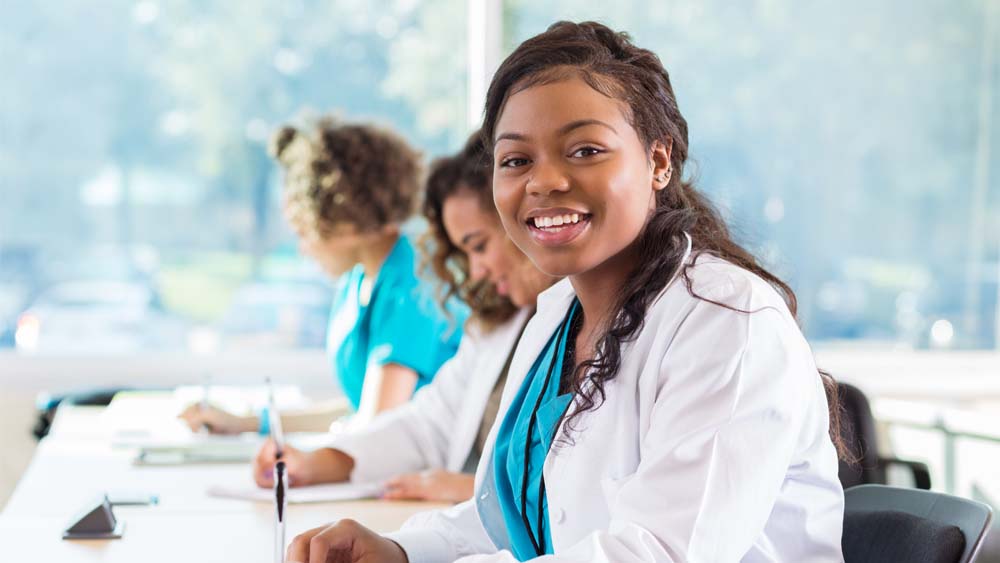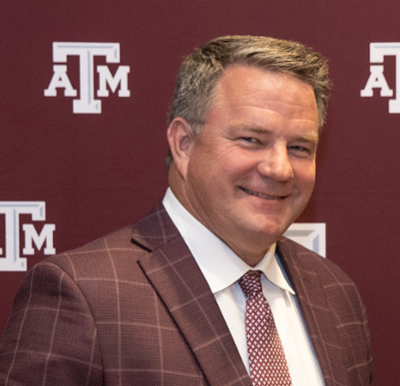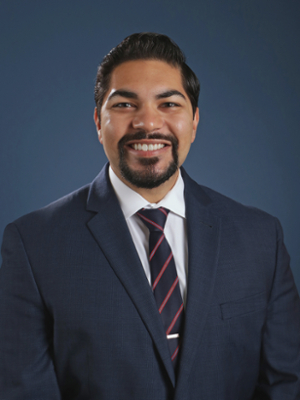
About a third of the graduates from the Department of Biomedical Engineering at Texas A&M University pursue medical school. As with any career, everyone’s journey is a bit different. Three former students who received undergraduate degrees in biomedical engineering in pursuit of medicine share where they are in the career journey and how their degree has impacted them.

A career in the field
Dr. Winston Marshall, an interventional cardiologist with Baylor Scott and White in Dallas, has been working as a cardiologist for over 20 years. Drawn to science and math as a student, Marshall knew he wanted to pursue engineering. But it wasn’t until he was at Texas A&M that he decided to pursue health care.
“I initially started in petroleum engineering but got nervous with the drop in oil prices at the time,” Marshall said. “I have always liked science and math, so the transition to biomedical engineering was an easy change.”
After graduating from Texas A&M, Marshall attended medical school at The University of Texas Southwestern Medical Center. He completed his internship and residency in internal medicine, as well as his fellowship in cardiovascular diseases, at the Baylor University Medical Center in Dallas.
“I love seeing patients and trying to figure out smart solutions to problems they are experiencing,” Marshall said. “Also, I enjoy being able to fix problems with my hands, like placing pacemakers or coronary stents.”
Along with supporting patients, Marshall also serves on advisory boards at St. Jude Medical (now Abbott) and a startup company called HealthKarma. He aims to help young entrepreneurs launch medical device companies and continue supporting innovative ideas.
“My life is ‘rich’ not so much in the monetary side of things but in the fullness of relationships with my patients and family,” Marshall said. “Choosing Texas A&M has been one of the best decisions of my life and really set me on a path for success.”

Beginning their career
Dr. Rahul Sawhney is a general cardiology fellow at Baylor Scott & White The Heart Hospital. After graduating with his biomedical engineering degree in 2013, he attended medical school at the University of North Texas Health Science Center in Fort Worth and completed his residency at Baylor University Medical Center.
Sawhney said his interest in medicine started at an early age. He has memories of his grandfather receiving bypass surgery and his father having a heart attack. He said seeing how the technology had changed and improved drew him to want to learn more.
“I wanted to become an interventional cardiologist,” Sawhney said. “I knew what I needed to do to get there, and I knew I wanted to do biomedical engineering and combine the two. Whenever we had clinical experiences through biomedical engineering, such as observing surgeries at the Texas Heart Institute, my desire to be a clinician was reaffirmed.”
Sawhney said during medical school, he found that the biomedical engineering curriculum was a good primer.
“When we got into clinical medicine, that's when my engineering knowledge really helped,” Sawhney said. “It was a lot of reading between the lines and understanding how to solve a problem from a different perspective.”
He said he continues to learn new things every day.
“I have a never-ending appreciation for the human body and its resilience,” Sawhney said. “We see people who are incredibly sick, whose hearts have failed, whose kidneys have failed, etc. We have the expertise, technology and perseverance to put them back together and get them out of the hospital."
In school
Madeline Franke is in her second year of medical school at the Texas A&M University Intercollegiate School of Engineering Medicine (EnMed) program in Houston. With this program, she will graduate with both a Master of Engineering and a Doctor of Medicine degree. While she decided to pursue medical school during her undergraduate program in the Department of Biomedical Engineering, Franke said she didn’t want to give up her engineering knowledge.
“EnMed was something that really intrigued me because they offered a very integrated curriculum,” Franke said. “There are challenges, but it is effortless when the curriculum is so integrated. Sometimes I do forget that I'm getting two degrees at the end of the four years.”
Franke started medical school right after her undergraduate program, and she said she has seen many things transfer over from her training in biomedical engineering.
“I think my interests have translated [to medical school] nicely. The Texas A&M biomedical engineering curriculum does align really well with this program.”
EnMed curriculum requires students to work on an engineering-based research project to solve a clinical challenge. Franke’s research project is focused on developing a drug delivery system for patients with osteoarthritis, a disease her grandmother has. She works alongside researchers at the Department of Orthopedic Surgery at Houston Methodist Research Institute on systems involving genetic therapies with nanoparticles.
“A lot of conventional treatments are lacking. They either don't last long, or they have a lot of adverse side effects,” Franke said. “I’m trying to have targeted therapy that can be released over a long, sustained amount of time so that patients receive that sustained relief for whatever they're experiencing.”
Advice
Sawhney encouraged students to stay motivated in pursuit of their career goals, even if it takes time.
“There's nothing wrong with taking extra time to truly learn the curriculum well. Don't try to rush through it because you'll do yourself a disservice," Sawhney said.
Marshall encouraged students not to get stressed about being the “perfect” student.
“It is a long road to eventually practice medicine,” Marshall said. “Don't miss out on some of the fun at Texas A&M because you're trying too hard for perfection. It takes experiences in life to make a person relate to people.”
Franke said her education taught her the importance of keeping an eye out for things that can be improved and fixed.
“In EnMed, we're always told to innovate and look for clinical needs and find things that our engineering brain can help us fix,” Franke said. “We can notice them because we have the mindset of a doctor too. Don’t settle with, ‘Oh, this is just how we do things,’ but always ask questions and try to figure out what can be improved, not only for the hospital but for the patients.”